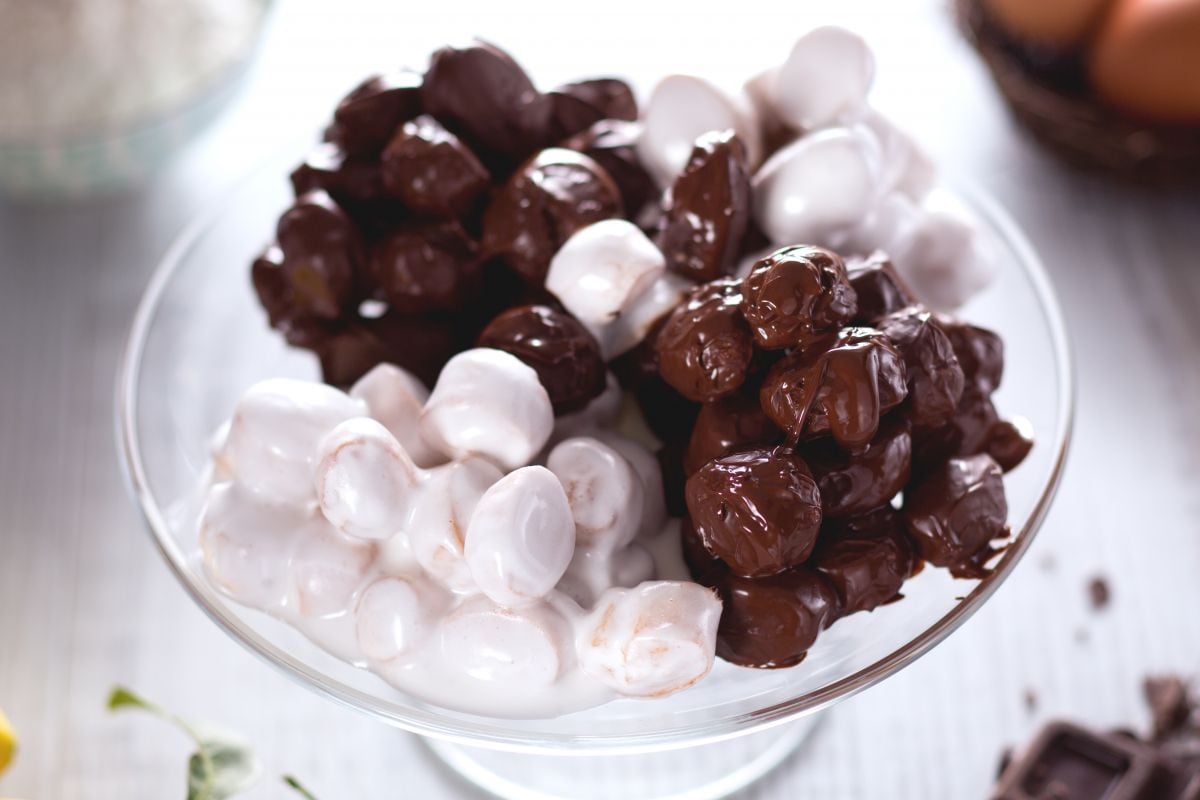Pignolata with honey
- Average
- 50 min
- Kcal 992

Glazed pignolata is a classic treat with deep roots in Calabria and Sicily. It is the kind of thing that lights up festive times. In Calabria, it's all about the honey-coated pignolata. Think sticky, sweet bites that just taste like tradition. And then there's Sicily, which really steps it up. They do it with tiny, crispy fried dough balls. These get split and coated with two amazing glazes: one packed with chocolate, the other bursting with lemon. And honestly, this combo? It's a total showstopper. Not only does it look stunning, but the mix of tangy and mellow flavors really really pops. Traditional Sicilian dessert magic, right there! Plus, it's super popular during Carnevale or Christmas. Brings that festive vibe wherever it goes.
And the two-tone topping? Not just for looks. The chocolate and lemon blend makes it stand out from other Italian fried dough balls. The golden crunch from frying? Pairs perfectly with the moist glaze, which is great for balancing textures and flavors. Known as pignolata Messinese or simply glazed pignolata—either way, it invites people to share sweet moments at a party.
Across Sicily, bakeries put their own spin on it—so, you'll find pignolata with lemon and chocolate glaze in shop windows during the holidays. And look, there’s always a friendly debate about which is better: the honey from Calabria or Sicily’s double glaze. Honestly, they're both so so good and hard to resist. It's one of those Italian holiday desserts you just remember. Celebrated for its crispy and sweet flavors that delight in every bite. Whether at home or right in the heart of Sicily, Sicilian pastries like pignolata capture the spirit of Italian celebrations—making every occasion a bit sweeter and more memorable. Which is great, for sure.
You might also like:

To prepare the glazed Pignolata, sift the flour into a bowl 1, then add the softened butter in pieces 2, and the salt 3.

The granulated sugar 4, then flavor with the grated zest of an untreated lemon 5 and with the grappa 6.

Finally, add the two whole eggs and the yolk 7, setting aside the remaining egg white to make the glaze. Begin to knead vigorously by hand 8 to combine the ingredients, then transfer the dough onto a floured work surface 9.

Continue kneading until you obtain a compact dough, shaping it into a loaf 10. Wrap it in plastic wrap 12 and let it firm up in the refrigerator for at least 2 hours. After resting, take the dough and cut it into pieces about 1/2 inch (1 cm) wide with a dough scraper 12.

Roll each piece to form ropes 13, then cut these into small gnocchi about 1/2 inch (1 cm) in size (14-15).

Now you can proceed with cooking. Heat the frying oil in a pot to about 340°F (170°C), which is the ideal temperature for perfect frying. It's advisable to use a food thermometer to monitor the temperature precisely. With a slotted spoon, submerge a few gnocchi at a time in the oil 16 to avoid lowering the oil's temperature. Fry for about 3-4 minutes, then drain the bites 17 and place them on a tray lined with paper towels to absorb excess oil 18.

Now, prepare the glazes. For the lemon glaze, pour the egg white into a bowl and begin whisking while gradually adding the powdered sugar 19 until fully incorporated, and then pour in the strained lemon juice 20. Continue whisking the mixture until it becomes thick 21.

Pour the lemon glaze over half of the Pignolata 22 and mix to incorporate 23. Now prepare the chocolate glaze: melt the chopped dark chocolate in a double boiler, add the butter 24, and heat over moderate heat, stirring occasionally with a wooden spoon,

until the chocolate is completely melted 25. At this point, pour the melted chocolate over the remaining half of the Pignolata, mix 26, and transfer the dessert onto a serving plate or stand, alternating the two glazes 27. The glazed Pignolata is ready to be enjoyed.